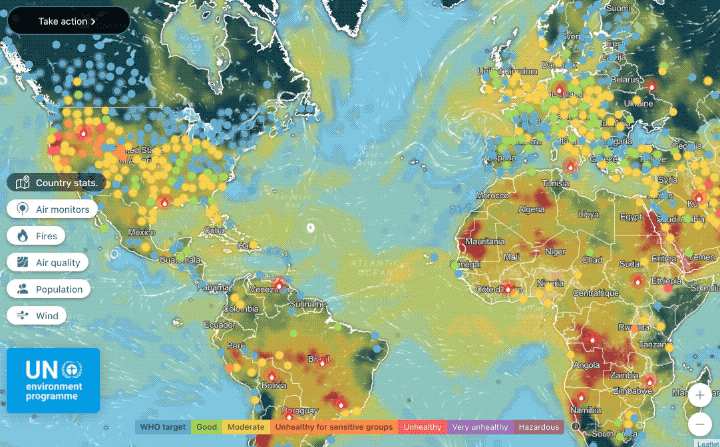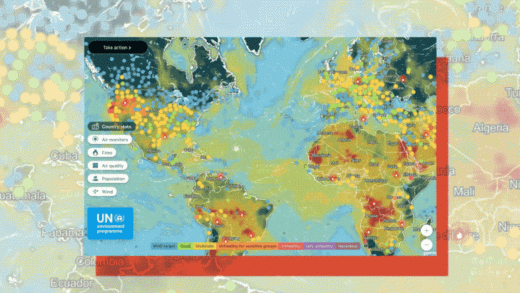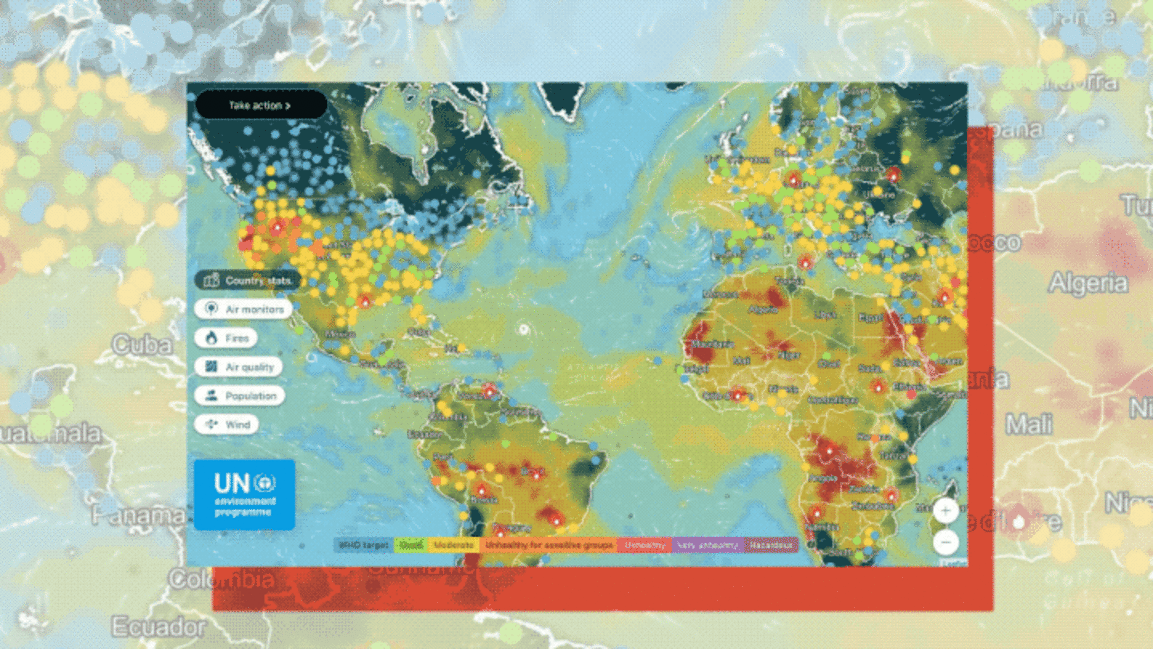See how many people around the world are currently exposed to polluted air
Do you know how healthy the air you’re breathing is? Emissions from cooking and cars, smoke from wildfires, pollution from electricity generation, and even dust and sea spray can all contribute to bad air quality. Around the world, nine in ten people breathe in unclean air, and now a new tool shows where all that pollution is, and who exactly it’s affecting, in real time.
For the second International Day for Clean Air, the UN Environment Programme (UNEP) partnered with IQAir, a Switzerland-based air quality technology company, to create a real-time air pollution exposure calculator. Using governmental, crowd-sourced, and satellite-derived air quality data, combined with population data, the tool calculates the total number of people exposed to PM2.5, a fine particulate matter present in polluted air that has been linked to illness and even death. As of press time, more than 5.2 billion people, or 70% of the world’s population, were currently exposed to polluted air that exceeds World Health Organization recommended limits.

The tool—which overlays an interactive air quality map of the world and builds off of the world’s largest air quality data platform launched by UNEP and IQAir in February 2020—also breaks down that exposure level per age group, showing just how many children under four years old, teens, and adults are exposed to unhealthy air. Children are particularly vulnerable to polluted air; PM2.5 has been linked to impaired cognitive development in children and exacerbated mental health problems. It’s also been associated with stroke, heart disease, lung disease, cancer, and diabetes. Air pollution accounts for an estimated 7 million premature deaths every year.
The point of the calculator, which updates every hour, is to help prioritize efforts to improve air quality monitoring, according to UNEP, and act as a catalyst for air quality improvements. Though more than 80% of people living in urban areas are exposed to dangerous air quality levels, most cities don’t have the ability to do this kind of air quality monitoring, which means most citizens aren’t aware of how unhealthy their air is, either.
Among 124 countries with air quality standards, only 57 continuously monitor air quality, a UNEP report found; 104 countries have no monitoring infrastructure in place. UNEP says it will build on the real-time calculator to support cities’ efforts to improve their air quality. “This real-time air pollution exposure calculator is an important step in our efforts to utilize technology to support cleaner air and, in turn, improved health and a healthier environment,” Inger Andersen, executive director of UNEP, said in a statement. “The imperative to act is urgent—we must continue to increase international cooperation on air quality data and research, develop new technologies and, crucially, work to reduce air pollution, especially for those most at risk.”
(30)



